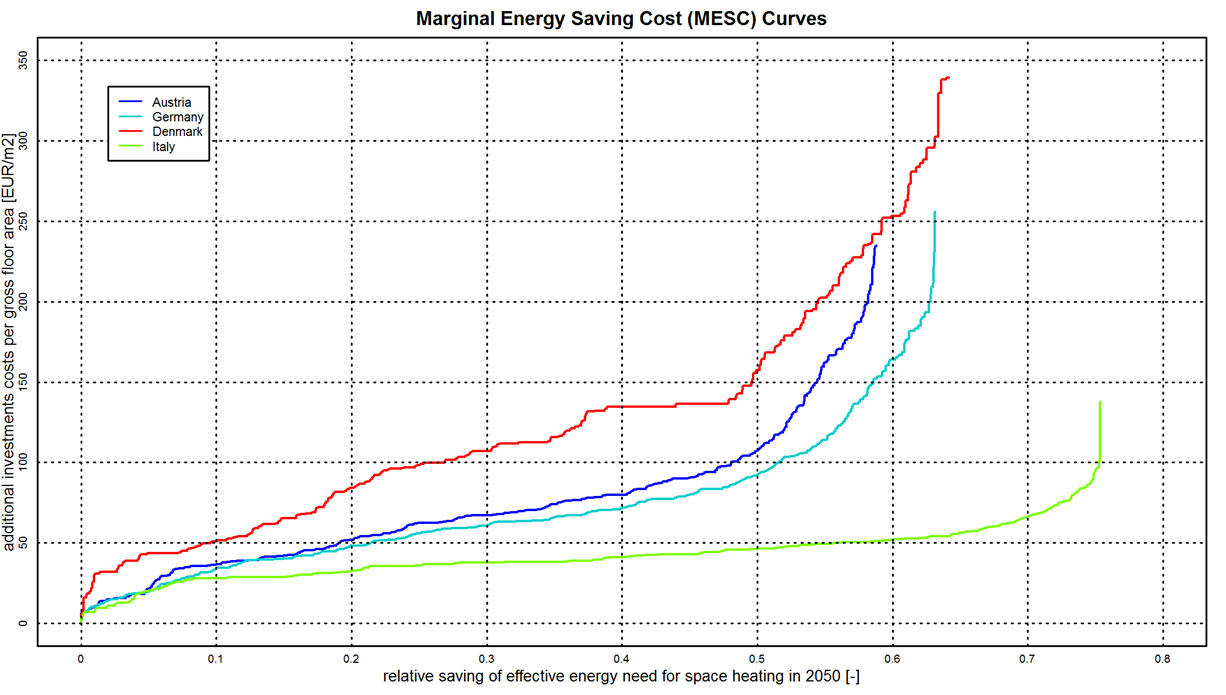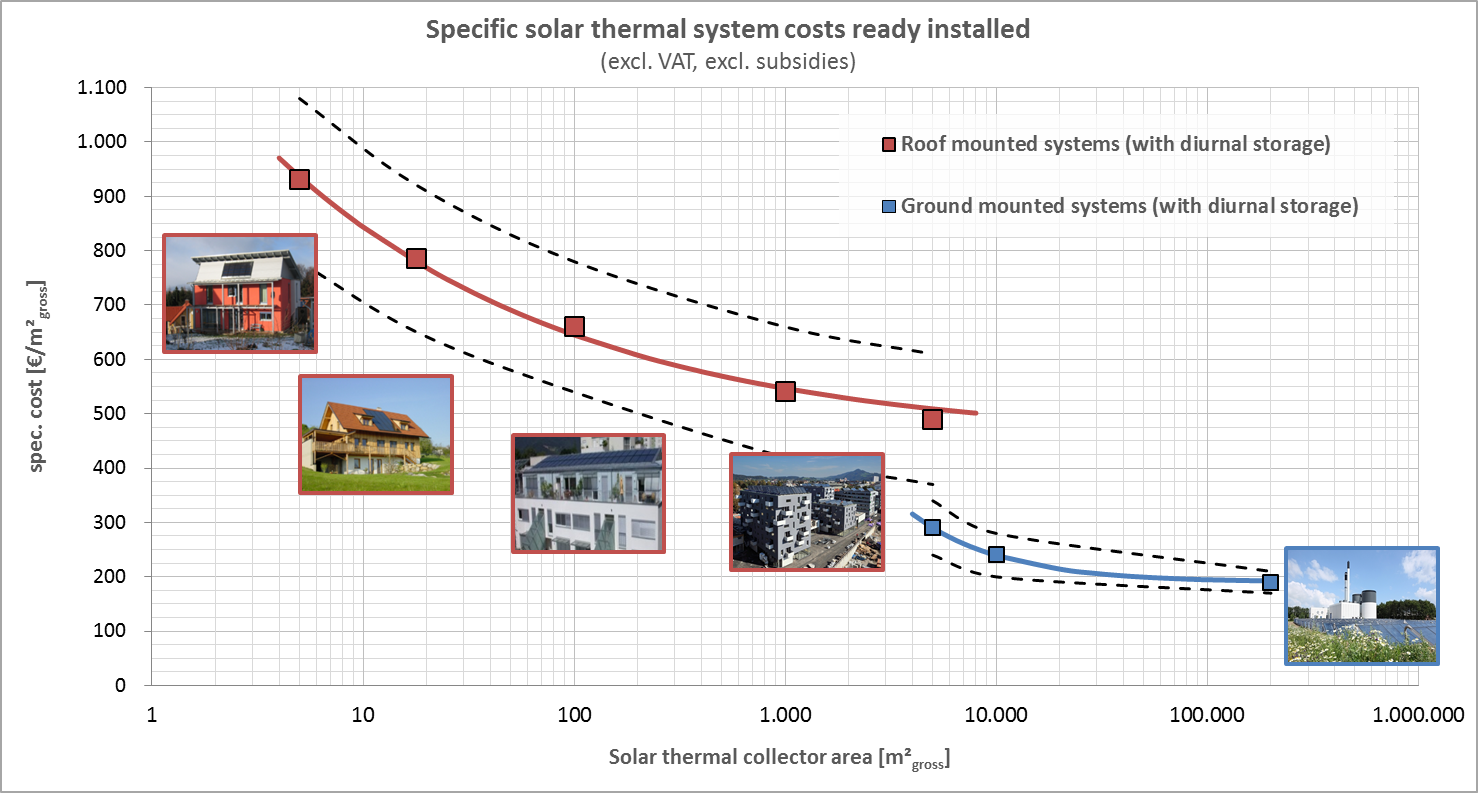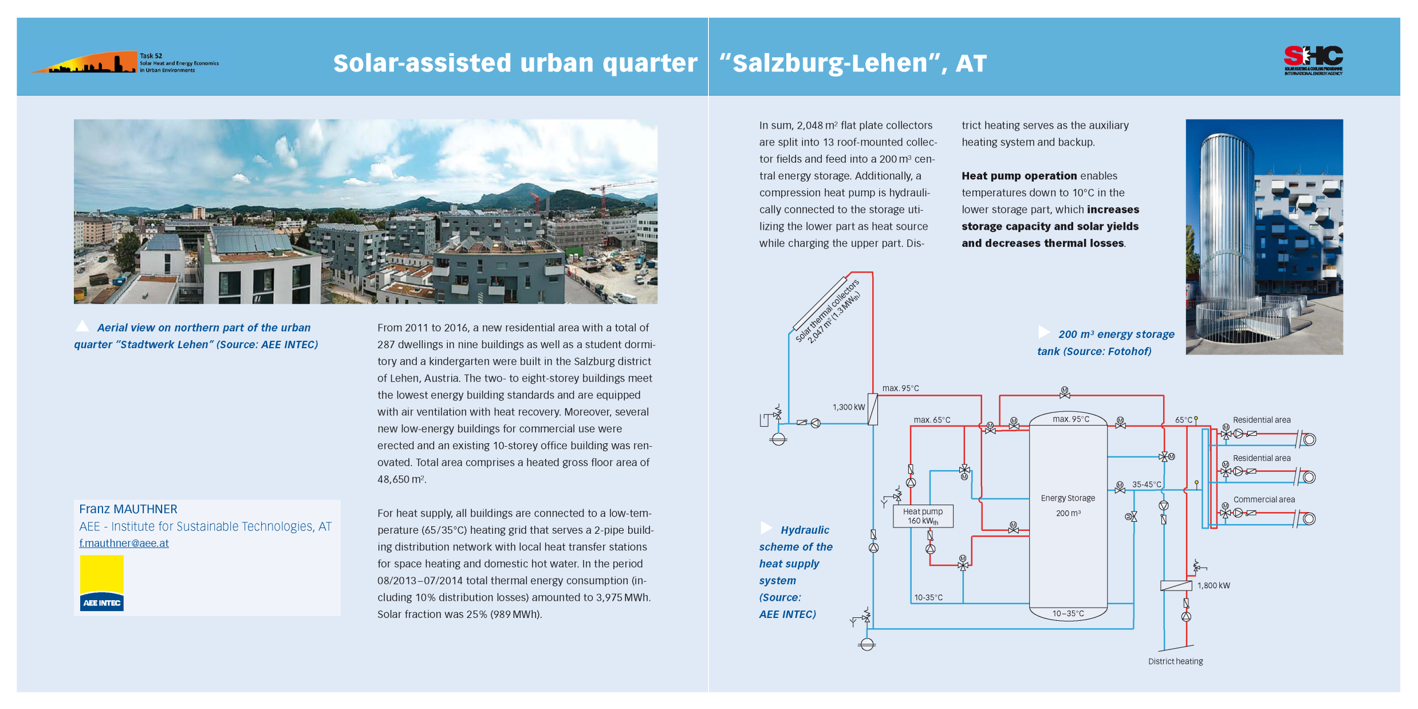IEA SHC Task 52: Solar Thermal & Energy Economics in Urban Environments
Short Description
Within the framework of the IEA SHC Task 52, sustainable, integrated energy systems for urban areas are analyzed holistically in order to derive reliable and quantifiable statements regarding the future role of solar thermal energy in urban heat supply. The concrete goal is to create planning and decision-making aids for urban planners and energy suppliers and to communicate the topic to stakeholders in the field of energy policy. In addition, best practice examples for the integration of solar thermal systems into urban energy systems are thoroughly investigated, documented and disseminated.
The contents of the task will be handled by experts from Denmark, Germany, Austria, Portugal, Sweden and Switzerland, with AEE - Institute for Sustainable Technologies (AEE INTEC) and the Energy Economics Group of the Vienna University of Technology (TU Vienna - EEG) as representatives from Austria. Overall coordination is the responsibility of the German Fraunhofer Institute for Solar Energy Systems (Fraunhofer ISE).
Task Workplan:
According to the work plan of the international research cooperation, the task is divided into the following subtasks:
- Subtask A: Energy Scenarios
Lead: Aalborg University, Denmark - Subtask B: Methodology, Tools and Case Studies
Lead: Sorane SA, Switzerland - Subtask C: Technology and Demonstrators
Lead: AEE INTEC, Austria
Contents, methods and project goals
Subtask A deals with the research question of the role of solar thermal energy in a renewable energy system of the future from a holistic, integrative perspective. The specific subject of the study is the analysis of solar heat for four European countries (Denmark, Germany, Italy and Austria) using the energy system models EnergyPLAN and REMod-D. The respective energy systems, including all relevant sectors (private households, transport, industry and commerce) as well as all available energy source, are modelled, simulated and calibrated against the reference year 2010. In a large number of future scenarios, the technical potential of solar thermal energy is determined and the ecological and socio-economic effects of different solar shares (solar fractions) on the overall energy system are examined using sensitivity analyses.
In Subtask B, the possibilities and potentials for the use of solar thermal energy in urban regions are increasingly considered from a planning perspective. The objective is to collect existing planning approaches and tools and to show methodical approaches that make it possible to identify and evaluate fields of application and technical restrictions for solar thermal energy in the context of urban energy systems. In contrast to the supraregional approach pursued in Subtask A, Subtask B focuses on smaller spatial units (city districts, city quarters, cities).
Subtask C comprises a status analysis of solar thermal system configurations suitable for applications in urban energy systems. Based on data from a significant sample (n=46) of realized systems in Denmark, Germany and Austria, a technical categorization according to application areas as well as a comprehensive techno-economic benchmark analysis is carried out. Nine selected best-practice examples are also examined in detail with regard to technical and economic parameters, underlying financing and business models as well as the learning effects and empirical values from planning, implementation and operation. The results are prepared and documented in an effective publicity manner.
Task of the Austrian subproject in the IEA SHC Task 52
The two Austrian representatives in the project were each entrusted with active and essential roles in the Task 52: AEE INTEC was responsible for the management and lead editing of Subtask C. TU Vienna - EEG provided essential contributions to the characterization of the building sector for the modelling of energy systems in Subtask A.
As a highlight of the project, techno-economic parameters for various solar thermal applications and cost curves for the renovation of buildings (Hummel, 2018) were developed in basic studies and implemented in the energy system models of the countries studied - for examples see Figure 1.
The status quo of solar thermal applications in urban energy supply systems was surveyed, thoroughly investigated, characterized and documented. As a major result of the task, comprehensive techno-economic indicators for solar system concepts for application in energy system analysis and implementation planning are available (Mauthner, 2016) - for examples see Figure 2.
Furthermore, nine best practice examples for the integration of solar thermal systems into urban energy systems were analysed in detail and key findings on financing, planning, implementation and operation were documented (Mauthner, 2017a, Mauthner, 2017b) and disseminated - for examples see Figure 3.
Summary of key findings and insights
The intention to transform our energy system make it necessary to assess the potential of individual technologies and measures to increase energy efficiency in a comprehensive context (involving all sectors and energy sources). For the first time, in the framework of IEA SHC Task 52, conclusive and reliable insights could be derived concerning the role of solar thermal heat in a predominantly renewable energy system of the future applying energy system analyses for the country energy systems of Denmark, Germany, Italy and Austria:
- The design of an energy system is decisive for the integration of solar thermal systems.
- Scenarios show that techno-economic potential for solar heat will have about 3-12% of the share in the future heat supply market.
- Depending on the chosen future energy scenario, the installation of additional solar thermal capacity may lead to higher socio-economic costs for the entire energy system (e.g. when solar thermal heat replaces other renewable but cheaper alternatives such as industrial waste heat or heat from heat pumps driven by excess renewable electricity).
- Solar thermal heat can reduce the pressure on limited renewable resources such as biomass.
- In a renewable energy system solar thermal heat competes only with other renewable heat supply options. Today´s advantages (CO2 reduction, saving fossil fuels) are no longer an argument for the use of solar thermal energy in such energy systems.
- An overall comprehensive perspective is necessary to analyze the future role of solar thermal energy – including the transport and industry sectors.
- Due to the already high and constant increase in heat demand in urban areas, solutions using solar thermal heat must be adjusted to these new situations (limited space, medium to high density of heat demand). Smart heat networks are a promising future solution in this respect.
Participants
Austria, Denmark, Germany, Portugal, Sweden, Switzerland
Contact Address
Project Lead
AEE - Institute for Sustainable Technologies
Dipl.-Ing. Franz Mauthner MSc
A-8200 Gleisdorf, Feldgasse 19
Tel.: +43-3112-5886-223
E-Mail: f.mauthner@aee.at
Web: www.aee-intec.at
Project collaboration
TU Vienna – Energy Economics Group (EEG)
Dipl.-Ing. Marcus Hummel
A-1040 Wien, Gusshausstrasse 25-29 / E 370-3
Tel.: +43-1-58801-370-325
E-Mail: hummel@eeg.tuwien.ac.at
Web: www.eeg.tuwien.ac.at



